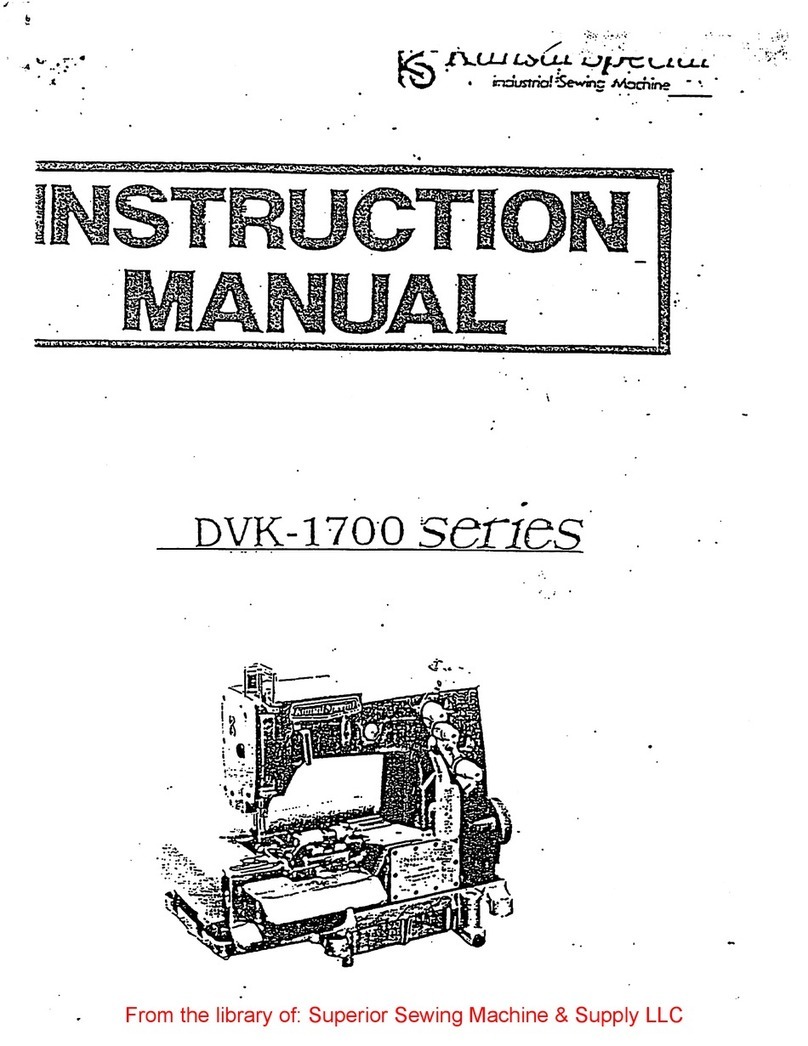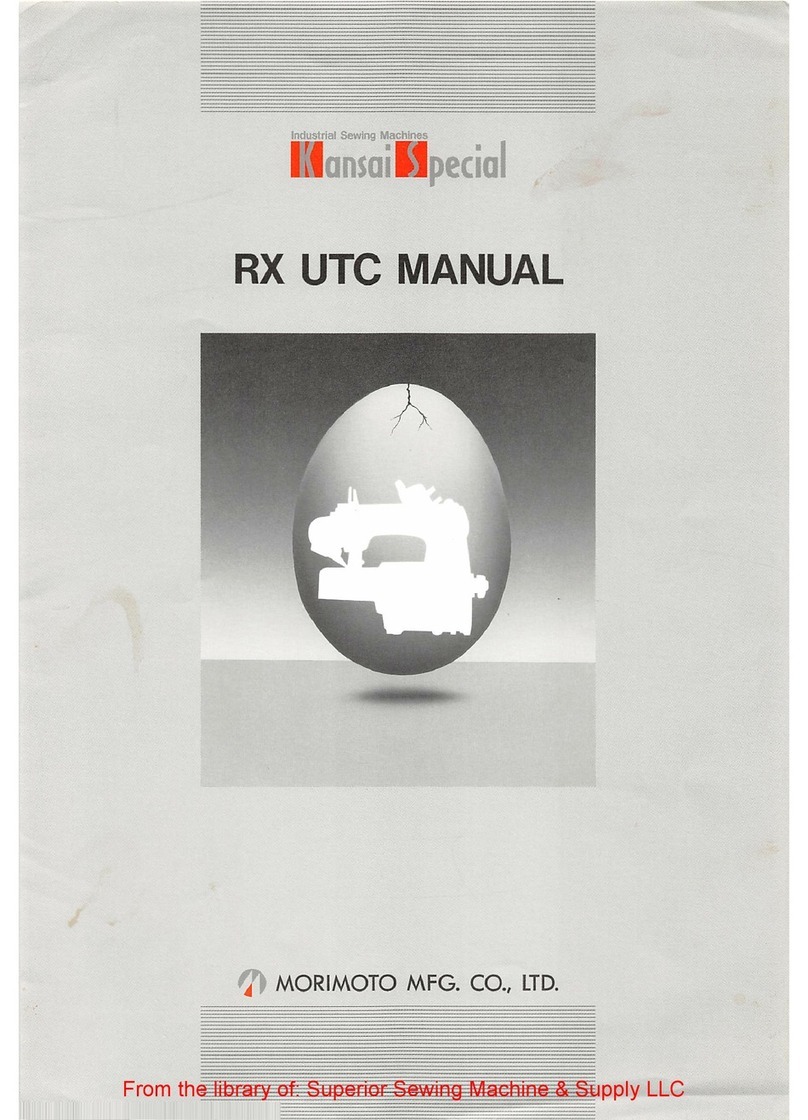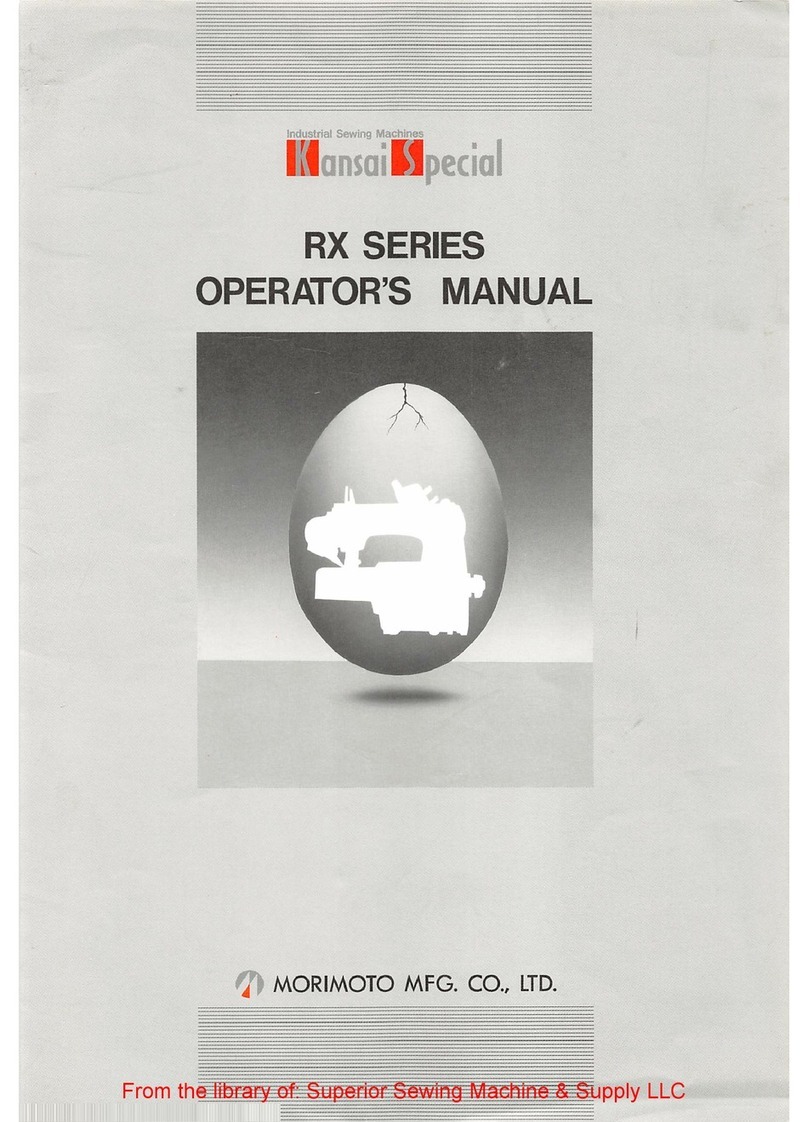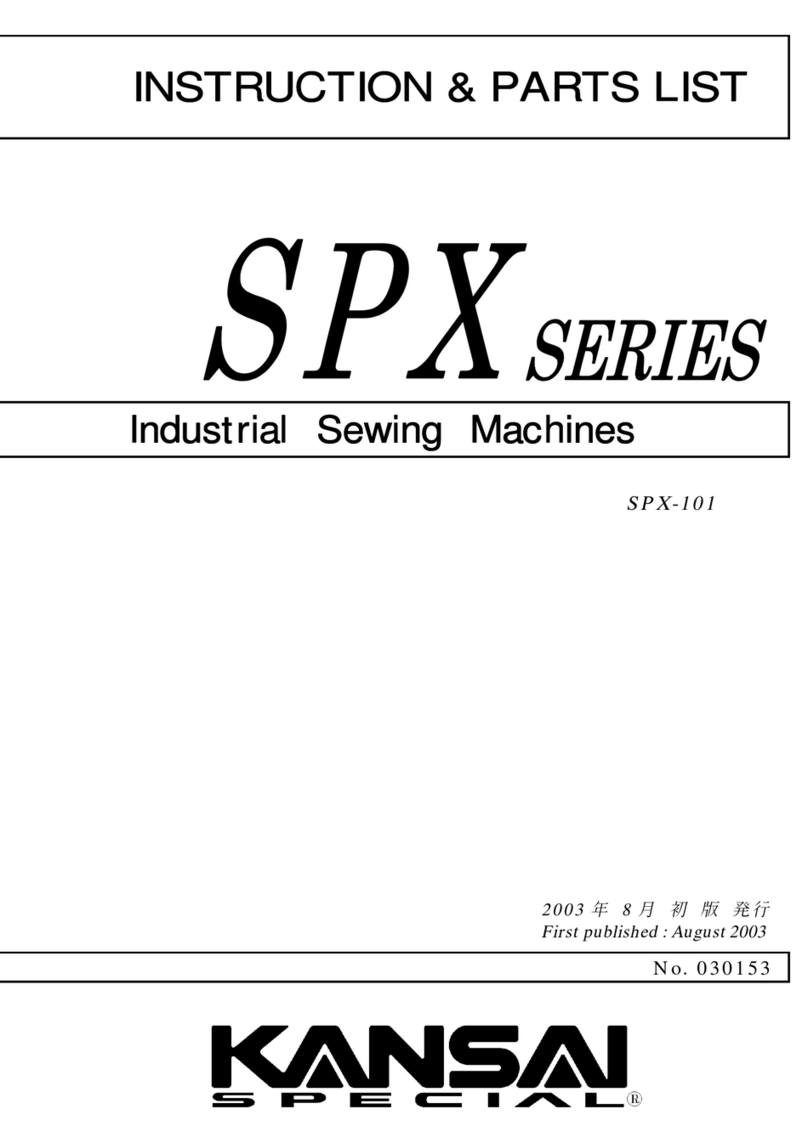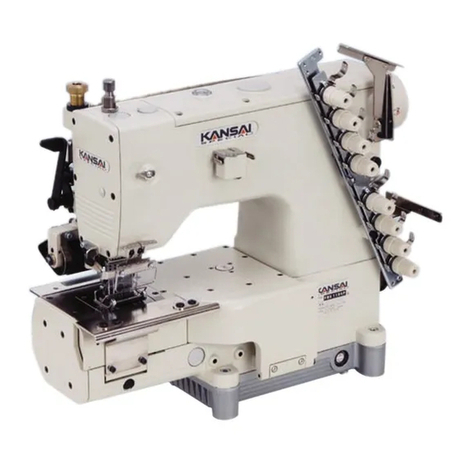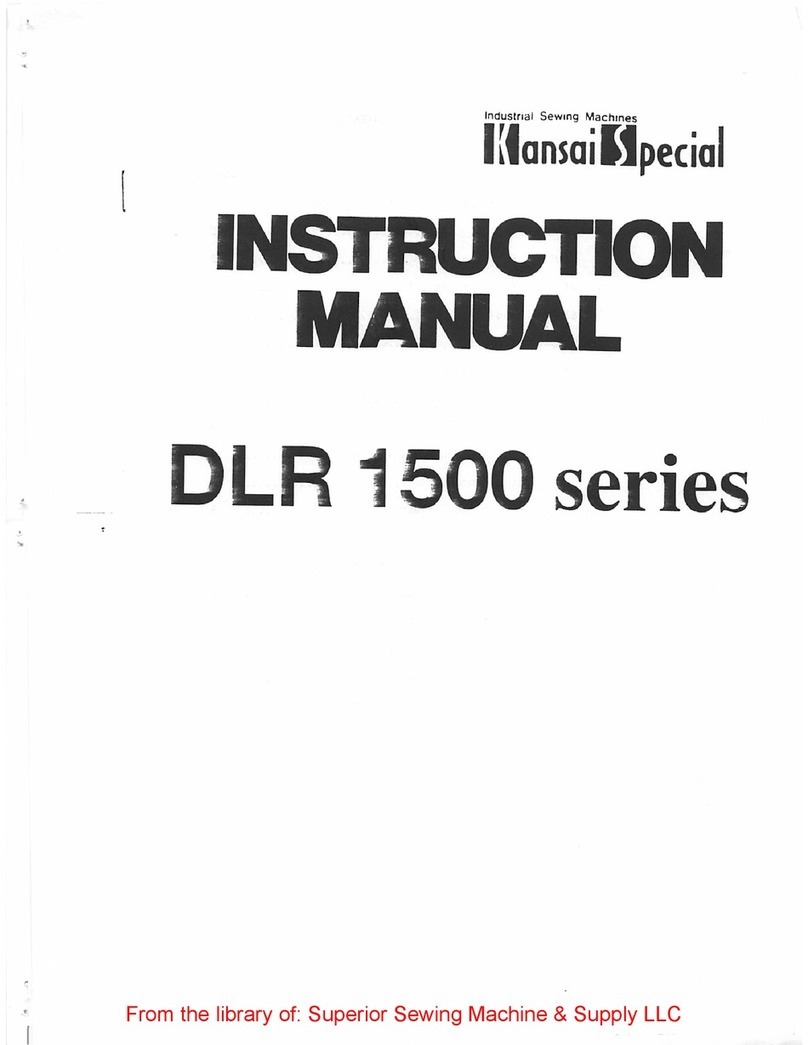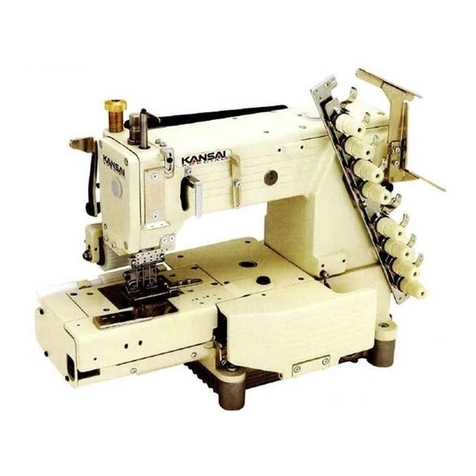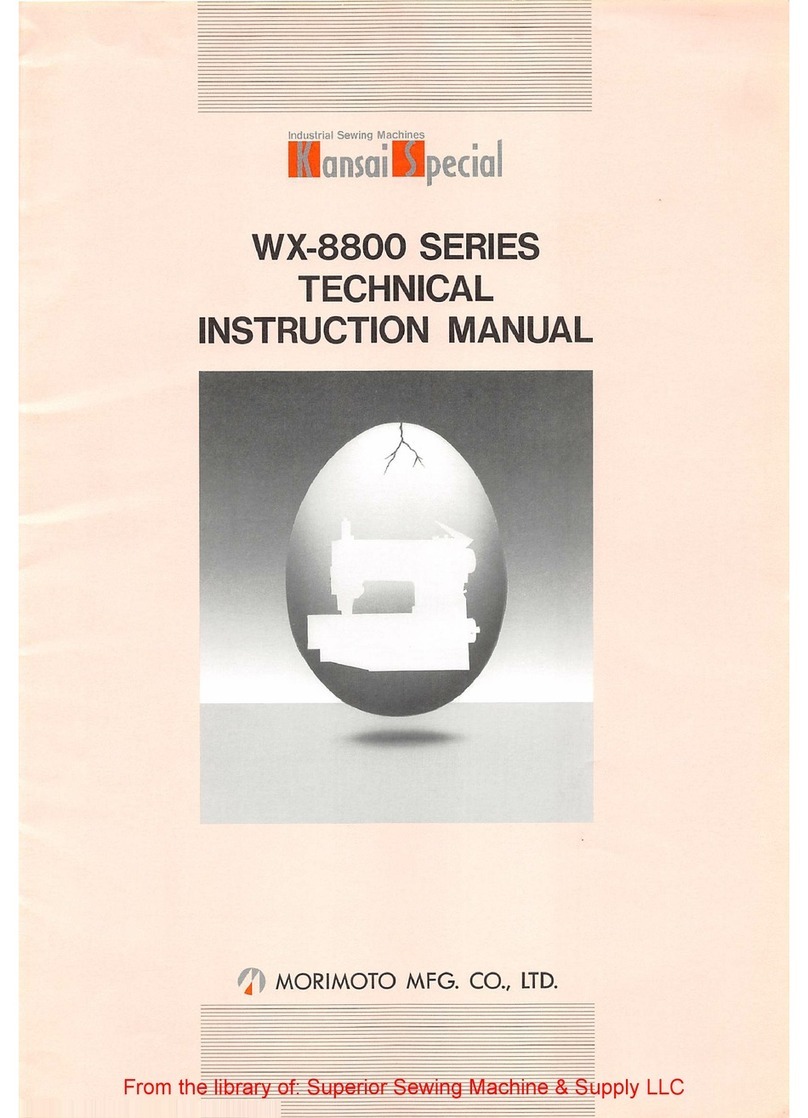M
MA
AC
C1
10
00
0
CONTENTS
CONTENTSCONTENTS
CONTENTS
1. NEEDLES & THREADING THE MACHINE
1-1 Needles ・・・・・・・・・・・・・・・・・・・・・・・・・・・・ 1
1-2 Replacing the needle ・・・・・・・・・・・・・・・・ 1
1-3 To thread the machine ・・・・・・・・・・・・・・・ 1
2. MACHINE SPEED
2-1 Machine speed & direction in which the
machine pulley runs ・・・・・・・・・・・・・・・・・ 2
2-2 Motor & belt ・・・・・・・・・・・・・・・・・・・・・・・・ 2
3. LUBRICATION
3-1 Oil ・・・・・・・・・・・・・・・・・・・・・・・・・・・・・・・・・ 3
3-2 To fill the machine with oil ・・・・・・・・・・・ 3
3-3 Replacing the oiland the filter element ・・ 3
4. SEWING MACHINE INSTALLATION
4-1 Cutting the machine table ・・・・・・・・・・・ 4
4-2 To install the machine ・・・・・・・・・・・・・・・ 5
5. TIMING OF THE LOOPER TO THE NEEDLE
5-1 Needle height ・・・・・・・・・・・・・・・・・・・・・・・ 5
5-2 Needle drop and needle side stroke ・・・ 6
5-3 To install the looper ・・・・・・・・・・・・・・・・・ 6
5-4 Position of the looper rocker ・・・・・・・・・・ 7
5-5 Looper left-to-right movement ・・・・・・・・ 7
5-6 Looper/needle front-to-back relationship ・8
5-7 Looper setting distance ・・・・・・・・・・・・・・ 8
5-8 Adjusting the looper back spring ・・・・・・ 8
6. ADJUSTING OF NEEDLE GUARD ・・・・・ 9
7. ADJUSTING THE PRESSER FOOT
7-1 Presser foot pressure ・・・・・・・・・・・・・・・・・9
7-2 Position of the presser footand foot lift ・・・9
8. ADJUSTING THE STITCH FORMATION
8-1 Adjusting the looper thread eyelets ・・・10
8-2 Position of the looper thread take-up ・・・10
8-3 Adjusting the needle thread guard ・・・10
9. ADJUSTING OF FEED MECHANISM
9-1 Position of motor shaft lever ・・・・・・・・・11
9-2 Adjusting of motor spring ・・・・・・・・・・・11
9-3 Adjusting of feed dog height ・・・・・・・・・11
9-4 Adjusting of stitch length ・・・・・・・・・・・・12
9-5 Lubrication ・・・・・・・・・・・・・・・・・・・・・・・・12
9-6 Position of sensor ・・・・・・・・・・・・・・・・・・・12
10. CLEANING THE MACHINE ・・・・・・・・・・13
11. OPERATION PANEL AND CONTROL
BOX
11-1 Mounting and wiring of control box ・・・14
*In case of single phase, three phase・・・15
11-2 Mounting of position transmitter ・・・・・16
11-3 Connecting of earth terminal ・・・・・・・・16
11-4 Operation panel ・・・・・・・・・・・・・・・・・・・・17
11-5 Other function ・・・・・・・・・・・・・・・・・・・・・22
